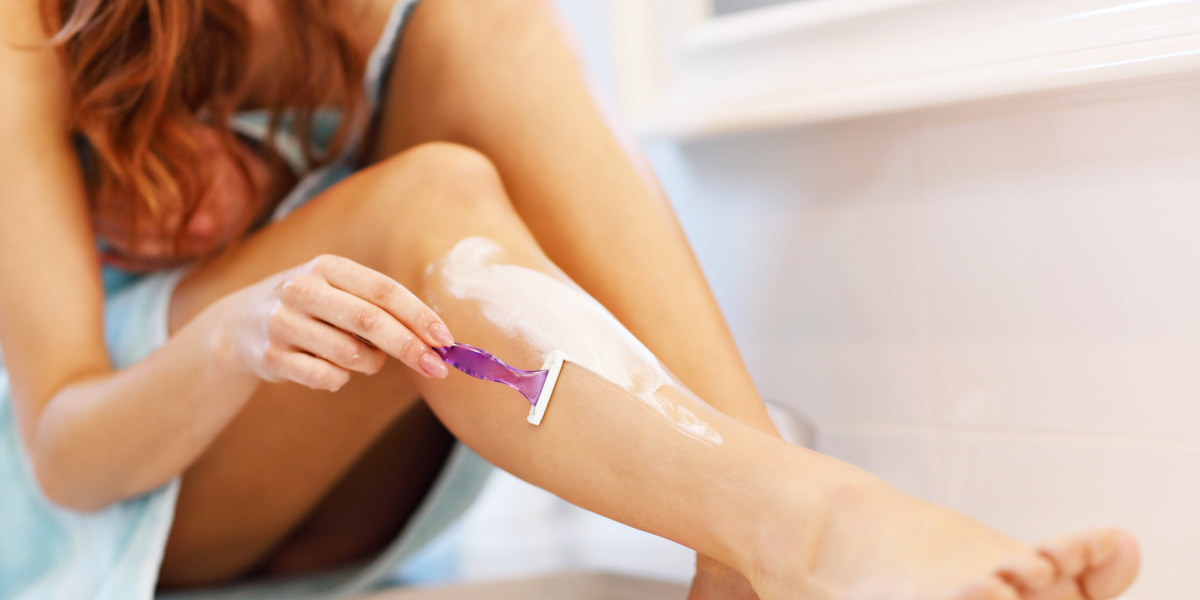Published on August 30th, 2023
Last updated on August 30th, 2023
Oral Irrigators for Healthy Teeth and Gums

Oral hygiene is crucial for maintaining good dental health. And brushing and flossing are the most common ways people keep their teeth white and healthy. But even with regular brushing and flossing, some areas of the mouth can be challenging to clean. It leads to plaque buildup, gingivitis, and other dental problems. In recent years, oral irrigators have become popular for improving oral hygiene. Many claim they provide a more thorough clean than traditional brushing and flossing.
Studies have shown that water picks can reduce the bacteria in the mouth. It leads to better oral health. Oral irrigators are also particularly effective in reducing the risk of gum disease. A common dental problem can lead to tooth loss if left untreated.
Besides their effectiveness in cleaning the mouth, water picks are also easy to use. And they can be a convenient alternative to traditional flossing. Some models even have features such as adjustable pressure settings and built-in timers. It ensures a safe and effective cleaning experience. Our article will tell you everything you need to know about irrigators.
What is an Oral Irrigator?
A water pick, also known as a water flosser, is a device that uses a stream of pressurized water. It cleans between teeth and along the gumline. The device typically consists of:
- A water reservoir.
- A motor.
- A pump that forces water through a small tip or nozzle.
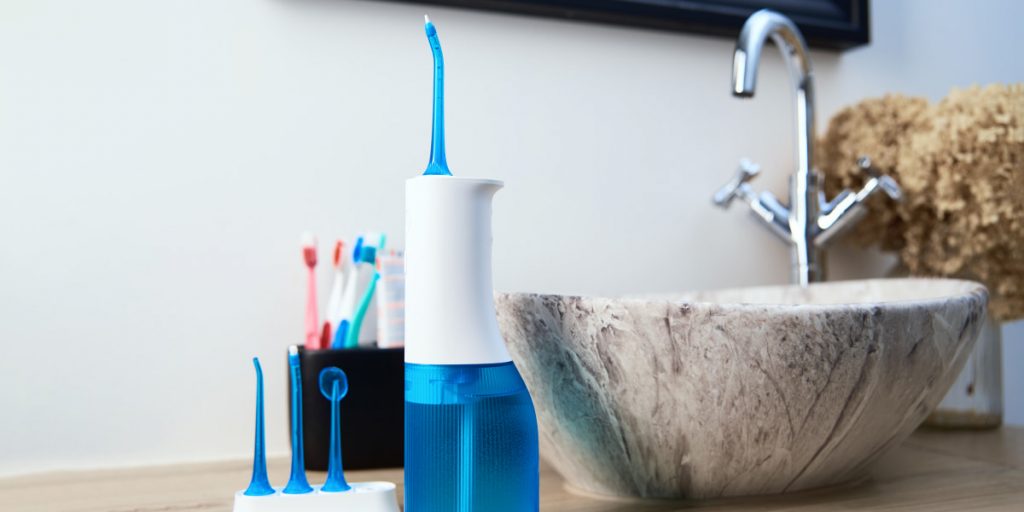
The tip or nozzle can be aimed at the spaces between teeth and along the gumline. It allows for a more thorough clean than traditional brushing and flossing alone.
Portable oral irrigators come with different types of tips or nozzles. They are for different cleaning purposes. Standard nozzles are suitable for general cleaning. While specialized nozzles are designed for:
- Cleaning around braces.
- Implants.
- Other dental appliances.
Some models also come with adjustable pressure settings and built-in timers. It’s to ensure a safe and effective cleaning experience.
Who Can Use an Oral Irrigator?
A portable oral irrigator is a great tool for maintaining optimal oral hygiene. It can be used by almost anyone interested in improving their oral health. But there are some things to consider before using a water pick:
- People with sensitive teeth may find the pressure of the water stream uncomfortable.
- And those with certain medical conditions may need to consult with a dentist.
- Also, children should only use a water pick with adult supervision. It’s to avoid any injuries.
Orthodontic patients can benefit from using a water pick. Braces and other orthodontic appliances can make cleaning effectively between teeth and around brackets and wires difficult. A water pick removes food particles and bacteria from these hard-to-reach areas. This reduces the risk of tooth decay and gum disease.
People with gum disease or at risk of developing it may also find an oral irrigator beneficial. Gum disease causes bacteria buildup along the gumline. And it can lead to redness, swelling, and bleeding. Regular use of an oral irrigator can help reduce bacteria in the mouth and improve gum health.
Can it Replace Dental Flossing?
A water pick can be a helpful tool in maintaining oral health. But it should not be a replacement for dental flossing. Dental flossing is an essential part of oral hygiene. It physically removes plaque and bacteria from between teeth and along the gumline. Flossing is essential for removing food particles and bacteria in tight spaces.
A water pick can help supplement flossing. It works by removing any remaining debris from the mouth. But it cannot replace the physical action of flossing. Some people may find it difficult to use dental floss properly. And an irrigator can be a helpful alternative in these cases. But note that a water pick should be used in addition to, not instead of, regular flossing.
How to Use an Oral Irrigator?

Using an oral irrigator is relatively straightforward. But there are a few key steps to ensure a safe and effective cleaning experience. Here’s how to use an oral irrigator:
- Fill the Reservoir. Begin by filling the water reservoir with warm water. Some irrigators may allow you to add mouthwash or other additives to the water. But it is essential to follow the manufacturer’s instructions when doing so.
- Choose the Right Tip. Select the appropriate tip or nozzle for your needs. Most irrigators come with many tips on how to use an oral irrigator for different cleaning purposes. They are standard cleaning, plaque removal, or cleaning around orthodontic appliances.
- Adjust the Pressure. Set the pressure to a comfortable level. Most irrigators come with adjustable pressure settings. And it’s important to start at a lower pressure. And gradually increase it until you find a comfortable level.
- Lean Over the Sink. Lean over the sink and place the tip of the irrigator in your mouth. Close your lips around the nozzle to prevent water from splashing.
- Aim at the Gumline. Aim the water stream at the gumline, holding the nozzle at a 90-degree angle to the teeth. Move the tip along the gumline, pausing briefly between each tooth to ensure a thorough clean.
- Work From Back to Front. Now work from the back teeth to the front, cleaning the upper and lower arches. Be sure to clean all areas of the mouth, including the back molars and any orthodontic appliances.
- Rinse and Clean. Spit out the water and rinse your mouth with fresh water. Remove the nozzle or tip from the irrigator, rinse it thoroughly with warm water, and let it air dry.
It is generally recommended to use an oral irrigator at least once per day. It’s preferably after brushing and flossing. But follow your dental professional’s recommendations. They may vary depending on your individual needs and oral health. Overuse of an irrigator can potentially damage the gums or teeth. So it is important to use it as directed. And not rely on it as a replacement for regular dental checkups and cleanings.
What are the Benefits of Using an Oral Irrigator?
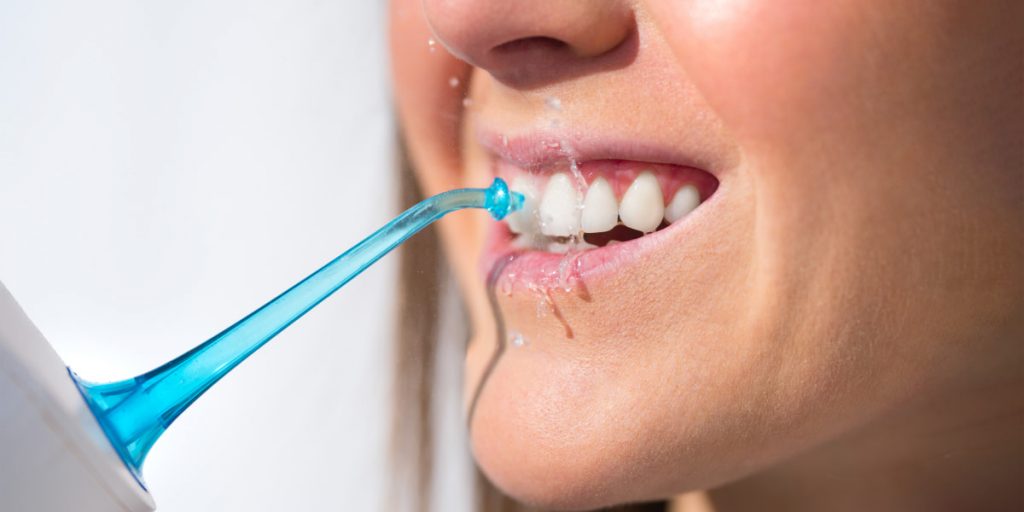
Using an oral irrigator has many benefits for oral health. Here are some of the top benefits of using an oral irrigator:
- Improves gum health. Oral irrigators effectively remove bacteria and food particles, especially from gum pockets and other hard-to-reach areas. By doing so, they can help reduce inflammation and promote healthier gums. It can ultimately prevent gum disease.
- Reduces plaque and bacteria. Oral irrigators are also great for removing plaque buildup on teeth. Buildup can lead to tooth decay and cavities if left unchecked. They can also remove bacteria from the mouth. Bacteria can contribute to bad breath and other oral health problems.
- Freshens breathe. Using an oral irrigator can help freshen your breath by removing food particles. This can be especially beneficial for those who suffer from chronic bad breath.
- Safe for braces and other dental work. Oral irrigators are gentle and safe to use, even for those with braces, dental implants, or other types of dental work.
- Easy to use. Oral irrigators are simple to use. And they need little effort compared to traditional flossing. They are also suitable for individuals who may have difficulty using traditional floss.
What Oral Irrigator to Buy?
You should consider a few factors to ensure you choose the right portable oral irrigator for your needs.
First, consider the type of nozzle or tip the irrigator comes with. Most models come with a standard tip. But some have tips for cleaning braces, implants or for reaching the back of the mouth. You should also consider the pressure settings. Higher pressure can be more effective for removing debris. But it can be uncomfortable for some people.
Another important factor is the size and capacity of the water tank. A larger tank will allow you to floss for longer periods without refilling. But it may also make the device less portable. Also, some models have extra features. They are timers or massage modes, which can improve the effectiveness of the cleaning.
When choosing a portable oral irrigator, consider your specific needs and preferences. You may have braces or dental implants. Then you may want to choose a model with specialized tips for cleaning these areas. Ultimately, choose a model that you feel comfortable using consistently.
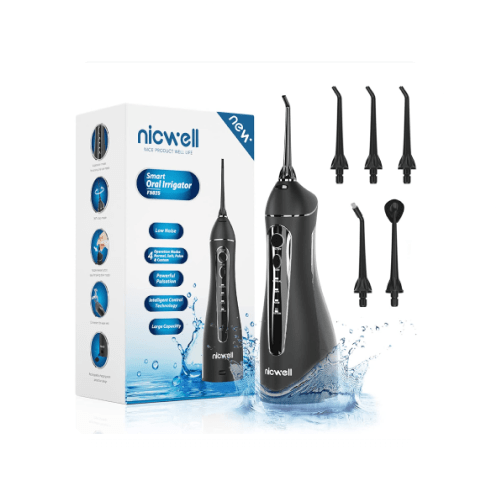
1. Cordless Water Dental Flosser for Teeth
The Cordless Water Dental Flosser is a portable and rechargeable oral irrigator. It’s designed to improve oral hygiene and dental health. Here are some of its features and advantages:
- Cordless Design. The portable oral irrigator is cordless, making it easy to use and carry around. You can take it with you when you travel; it doesn’t take up much space.
- Powerful Water Pressure. With a water pressure of up to 1800 pulses per minute, the irrigator can remove food particles and bacteria from hard-to-reach mouth areas, such as between teeth and the gum line.
- Three Modes. The irrigator has 3 different modes – normal, soft, and pulse. The normal mode is for standard cleaning, while the soft mode is for people with sensitive teeth and gums. The pulse mode is for massaging and stimulating the gums.
- Large Water Tank. The portable oral irrigator has a 300 ml water tank lasting up to 60 seconds of continuous use. You can easily refill the tank with water or mouthwash.
- Interchangeable Nozzles. The irrigator comes with three interchangeable nozzles. So many people can use it with their nozzles. The nozzles are color-coded, making identifying each person’s nozzle easy.
The Cordless Water Dental Flosser is a convenient tool for oral hygiene. Its cordless design, powerful water pressure, and interchangeable nozzles make it easy to use and share with others.
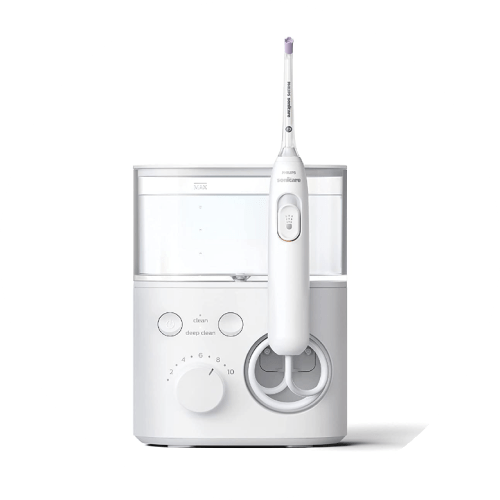
2. Philips Sonicare Power Flosser 5000
The Philips Sonicare Cordless Water Dental Flosser is an advanced oral irrigator. It promises to improve gum health and freshen your breath. Here are some of its features and advantages:
- Advanced Nozzle Design. The irrigator features a high-performance nozzle. It can reach deep between teeth and below the gumline for effective cleaning.
- High-Pressure Water Jets. The irrigator uses high-pressure water jets. It can effectively remove food debris, plaque, and bacteria from hard-to-reach areas. This promotes better gum health and reduces the risk of gum disease.
- Customizable Modes. The irrigator has two customizable modes. One is the standard mode for regular use. Another is a gentle mode for sensitive gums.
- Easy-to-Fill Water Reservoir. The oral irrigator has an easy-to-fill water reservoir. It can hold up to 600 ml of water for a full cleaning session.
- Cordless Design. The irrigator is cordless and rechargeable, making it convenient and portable.
The Philips Sonicare Cordless Water Dental Flosser is an advanced and effective tool. It improves oral hygiene and gum health. Its high-pressure water jets, customizable modes, and cordless design make it convenient.

3. Tricklet Cordless Oral Irrigator
The Tricklet Cordless Oral Irrigator is a portable and waterproof oral irrigator. It provides an easy and effective way to maintain good oral health. Here are some of its features and advantages:
- Cordless and Portable Design. The irrigator is cordless and comes with a portable storage bag, making it easy to carry and use.
- Waterproof. The irrigator is IPX7 waterproof rated, meaning it can be safely used in the shower or bath.
- Three Operation Modes. The oral irrigator has 4 operation modes and three gears. They are spot spraying, gentle spraying, strong spraying and pulse spraying. They are to suit different personal care needs.
- Powerful Water Pressure. The irrigator has a powerful water pressure of up to 130 PSI. It can effectively remove food particles, plaque, and bacteria between teeth.
- Long Battery Life. The irrigator comes with a rechargeable battery. It can provide up to 21 days of continuous use on a single charge.
The Tricklet Cordless Oral Irrigator is a portable, waterproof, and powerful oral irrigator. It can help maintain good oral health. Its modes, water pressure, and long battery life make it effective for daily oral care.
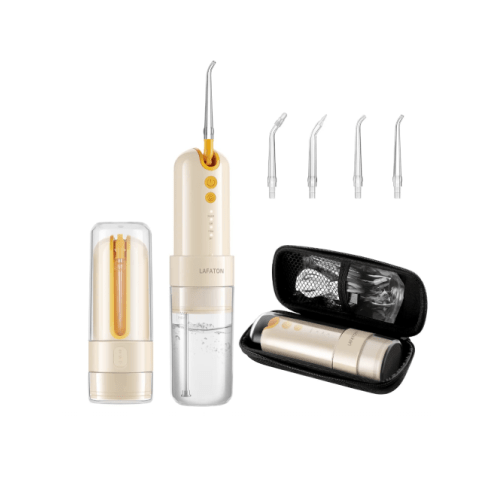
4. LAFATON Water Flosser Professional for Teeth
The LAFATON Water Flosser Professional for Teeth is an electric portable oral irrigator. It provides efficient and effective oral cleaning. Here are some of its features and advantages:
Features:
- 320mL large water tank that can last up to 120 seconds of continuous use.
- 5 different pressure settings ranging from 20 to 110 PSI. It meets different cleaning needs.
- 4 interchangeable nozzles.
- Built-in rechargeable battery that can last up to 21 days after a full charge.
- IPX7 waterproof design allows for easy cleaning and safe use in the shower.
- Compact and portable design makes it easy to use and store at home or while traveling.
The advantages of portable oral irrigator are:
- Providing a deep clean that can remove up to 99.99% of food debris and plaque. Helping in preventing dental problems such as gingivitis, periodontitis, and bad breath.
- Easy using and adjusting with its intuitive pressure control system.
- Suitable for people with braces, implants, and other dental work.
- A 12-month warranty and responsive customer service.
Instructions for Use for Every Irrigator
You should:
- Fill the water tank with lukewarm water and optionally add mouthwash.
- Choose a nozzle and firmly insert it into the handle of a portable oral irrigator.
- Turn the device on and adjust the pressure setting to your liking.
- Aim the nozzle at your teeth and gums and let the water flow out. Start with the back teeth and work your way forward.
- Hold the nozzle at a 90-degree angle to your teeth and gums, and pause briefly between each tooth.
- After use, empty the remaining water from the tank and remove the nozzle for cleaning.
Bottom Line
As a result, the oral irrigator is an essential device for oral care. With the irrigators from our list, you can choose the most suitable tool for your needs. So, your care of the oral cavity will be as effective and pleasant as possible.
FAQ
What is an oral irrigator used for?
An oral irrigator is a dental tool that uses a stream of water. It removes food particles, plaque, and bacteria from the mouth. It can be an alternative to traditional dental floss. Or it can be as a complement to regular brushing and flossing.
How to use an oral irrigator?
To use an oral irrigator, fill the water tank with warm water. And select your desired pressure setting. Lean over a sink and place the tip of the irrigator into your mouth. Turn the unit on and move the tip along the gum line. Pause briefly between each tooth to allow the water to clean the area. Aim the tip at a 90-degree angle towards the gum line to ensure optimal cleaning.
What is an oral irrigator?
An oral irrigator is a device used to clean teeth and gums by directing the water into the mouth. It is a handheld device typically consisting of a water reservoir, a motor, and a nozzle. Oral irrigators can be corded or cordless and have various pressure settings. They allow for different levels of cleaning.


